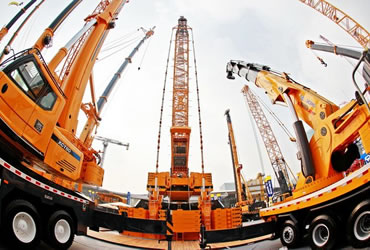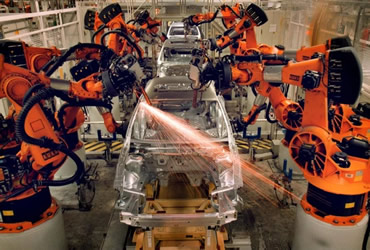Robot substitution effect will reach 4.7% in 2025

"In our survey sample, the proportion of companies using robots was 8.1% in 2015, and this proportion increased to 13.4% in 2017. The average annual growth rate of robot investment in the three years from 2015 to 2017 was as high as 57%." On December 18, Cheng Hong, Dean of the Institute of Quality Development Strategy of Wuhan University, announced the above data at the "China Enterprise Comprehensive Survey (CEGS) Report" results release.
Based on three consecutive large-scale surveys of more than 2,000 manufacturing companies in Guangdong, Hubei, Jiangsu, Sichuan and Jilin since 2015, the Institute for Quality Development Strategy of Wuhan University has formed the "Transformation and Upgrade of Chinese Manufacturing Companies: Status, Challenges and Trends" research report. The report covers technical innovation and research and development, replacement of machines, countermeasures for rising labor costs, environmental protection, and finance.
According to the report, the massive use of robots will lead to the disappearance of some jobs and increase employment pressure. It is estimated that the overall substitution effect of robot use on labor is 0.3% and will reach 4.7% in 2025.
However, Cheng Hong, dean of the Quality Development Strategy Institute of Wuhan University, told a reporter from China Business News that the use of robots has two main effects on employment: one is the linear substitution effect. For example, it is mentioned in the report that the use of robots replaced 9.4% of the employees in the sample companies with junior high school and below, while the number of employees at university and above increased by 3.6%. The impact of robots on different work tasks shows obvious structural differences. Robots replace 3.3% of routine operation tasks that require repetitive motion and physical strength, and at the same time increase the demand for unconventional cognitive tasks by 2.7%.
Another effect is the growth effect. Because the use of robots will increase corporate productivity and further expand production. Although in the short term, the use of robots has grown extremely fast and will have a certain impact on employment, but the replacement rate is now 0.3%, and there is no need to panic.
Regarding the business environment, the report mentioned that because they do not have the capabilities and economies of scale of large enterprises, the transaction costs for SMEs to obtain business environment policy dividends are higher. Moreover, the needs of small and medium-sized enterprises for the business environment are significantly different from those of large-scale enterprises.
In terms of demand for the business environment, small and medium-sized enterprises are different from large-scale enterprises. General business environment policies designed mainly for the needs of large enterprises cannot fully meet the needs of small and medium-sized enterprises.
Compared with large enterprises, the financing constraints of small and medium-sized enterprises are more obvious. 85% of small and medium-sized enterprises believe that financing channels and financing costs are important obstacles to the development of enterprises, while this indicator is only 57% of large enterprises; relatively large Enterprises, administrative management and examination and approval bring greater pressure. 61% of small and medium-sized enterprises believe that administrative control and examination and approval are important obstacles to the development of enterprises, while this index is only 35% of university enterprises.
The report believes that my country’s current business environment policies still need to consider the differences in capabilities and needs between small and medium-sized enterprises and large enterprises.
Based on this, Cheng Hong believes that the main starting point and focus of China's business environment policy in the next stage must be SMEs. "It is recommended that the actual sense of acquisition of small and medium-sized enterprises be regarded as the most important indicator of the performance evaluation of business environment construction, which will force the continuous optimization and improvement of business environment policies."
In addition, continue to promote vigorous decentralization related to the business environment, so that the government that knows and is close to SMEs becomes an important subject in the construction of the business environment.







 沪公网安备 31011402006992号
沪公网安备 31011402006992号